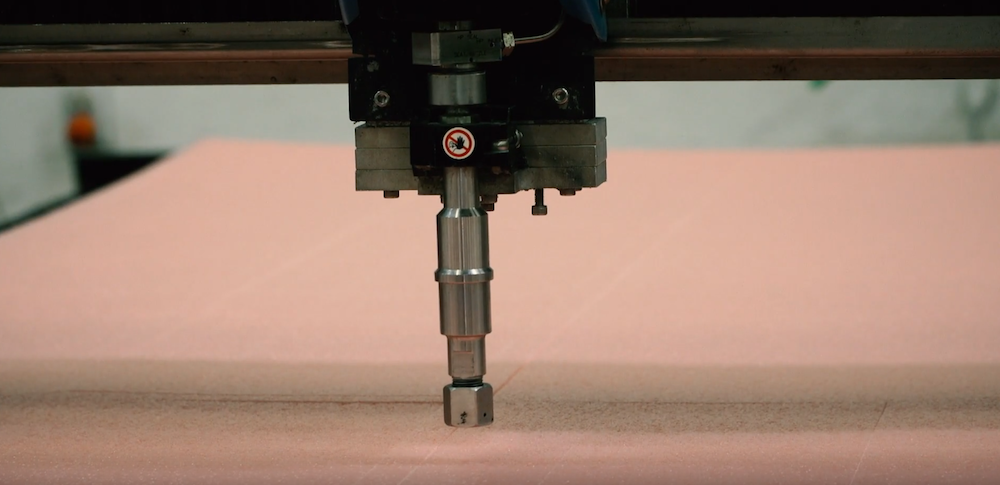Any stock case can be converted into a custom case when a custom foam interior is added.
The production of foam inserts is made possible by foam fabrication, the process through which a foam polymer is manufactured. Polymer foams can be produced via various types of foam manufacturing techniques, with the end result being a lightweight yet durable solution that helps secure and cushion products while they're on the move.
Considering the flexibility offered in foam fabrication, foam products are available in a wide variety of colors, densities, textures and chemical compositions. Foam materials include polyether and polyester urethane, polyethylene, cross-link foams and expanded styrenes.
The Different Foam Fabrication Processes
Foam inserts can be easily prototyped and when it comes to production, inexpensive cutting dies produce the most complex shapes. Foam layers are laminated and trimmed to properly fit any case for protection and presentation.
The four leading foam fabricating processes are as follows:
Fabricated: Multiple pieces of foam are laminated together to create square- or rectangular- shaped cavities. Cases By Source recommends at least 2” of foam around the perimeter of the case, and 1”-3” between items depending upon weight and size.
Die-Cut Foam: This custom interior is cut from a steel rule die formed to your exact specifications and is cost-effective for purchases of quantities of cases that require identical foam interiors.
The die-cutting process.
Water Jet Cutting: This process of cutting foam uses a high-pressure water stream. The smallest details are easily cut with great accuracy. The cavity walls are straight at full depth unlike the die-cut method, which leaves walls slightly bowed. There is no tooling charge, but there may be a computer programming charge.
CNC Routing: A computer-controlled cutting machine guides drill bits along materials to cut, shape, and carve them. When applied to foams, plastics and other specialized materials, this process can define complex parts without the added time and cost of custom tooling.
Types of Foam Commonly Used
Polyurethane: The most common polymer used to make foam. Polyurethane foam has an elastic cell structure that provides a wide range of performance possibilities. This soft, open-cell foam is best for delicate and lightweight items.
Polyester/Polyurethane: This is an open-cell, flexible polyurethane foam ranging in density from 1.5# to 6#. It is also available in anti-static formulations.
Polyether/Polyurethane: This is a low-cost, highly resilient open-cell foam that is available in densities ranging from 1# to 1.8#. It is also available in anti-static formulations.
Polyethylene: This closed-cell foam will not absorb water or moisture. This firm, dense foam meets MIL P 26514, Type 1, Class 2 specifications. It is generally used with heavier products, and is great for positioning and cushioning. Polyethylene is impervious to most chemicals.
Crosslink/Polyethylene: A rigid polyethylene with little give and impervious to most chemicals. It is available in anti-static formulations and in a variety of colors. Crosslink is generally more expensive, but when aesthetics and durability are necessary, they should be considered.
EVA/Polyethylene: A firm polyethylene foam, but with a softer feel compared to crosslink. It is impervious to most chemicals and, like crosslink, is available in anti-static formulations and with color options. EVA is also generally more expensive, and should be considered when aesthetics and durability are a must.
Let Cases By Source Help With Your Foam Fabrication
The correct choice of material for foam fabrication is made by considering product weight and fragility, as well as the positioning and cushioning requirements for it. When fabricating a foam interior for a consumer product, flocked foam with rich color saturation is available.
Cases By Source will work from your drawings or product itself to construct a custom foam insert. Our design team will determine the best type of foam to most effectively protect your product. A cutting die is created and inventoried at our plant so that you can repeat your case order in the future exactly as it was the first time.
A Foam Fabrication Example from Cases By Source
A tool company approached Cases By Source looking to design a durable tool tray to organize and protect tools stored in their 50 service vans. Previous trays quickly deteriorated from the constant use of foam not suited to handle the level of use. Our customer wanted a more permanent solution.
Cases By Source was sent a set of the tools/instruments and we designed a new layout optimal for the company’s technicians. We designed a workstation tool tray that provided proper protection and supported the weight of these tools. Each tray was constructed with a polyethylene (PE) and crosslink-polyethylene (XLPE) combination. XLPE was laminated to the PE to give the tray added durability, while the PE controlled the overall cost of the tool tray.
Cases By Source provided schematics for customer approval. Following sign-off, first articles were produced to assure the fit. Slight design modifications were made, and we produced the balance of the tool trays to fully outfit their fleet with a solution that allowed them to be more productive and confident on the job.
From custom cases to custom foam inserts, Cases By Source can help ensure your packaging solutions are built for precision and protection at every corner. Request a consultation so we can discuss your packaging needs and see how we can help.








Leave a Comment